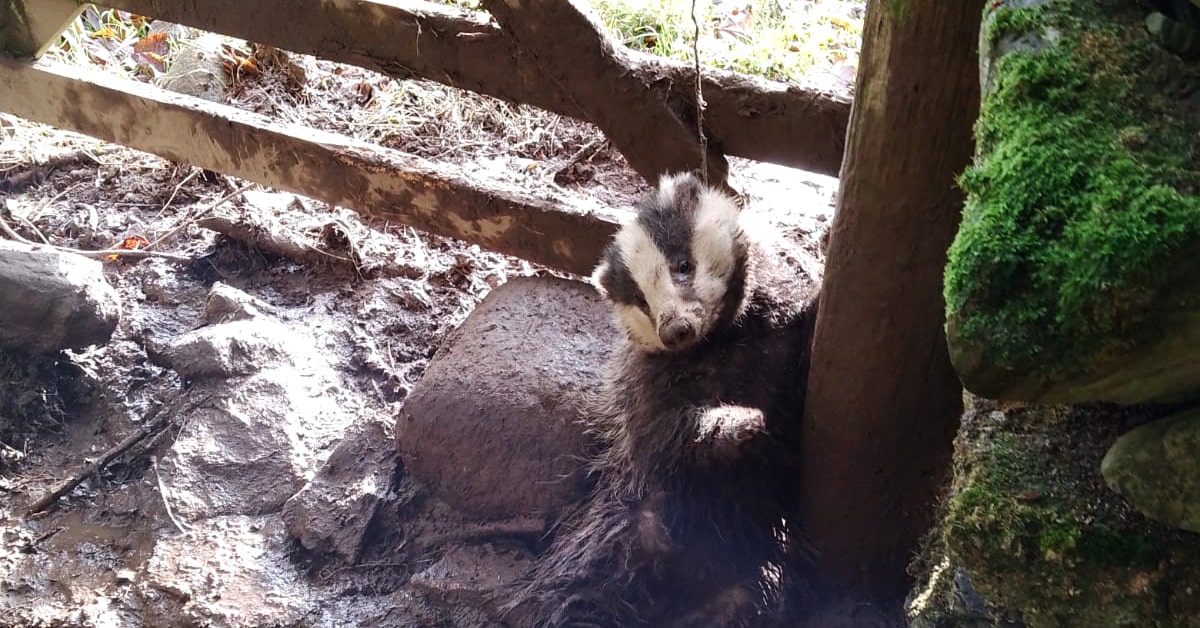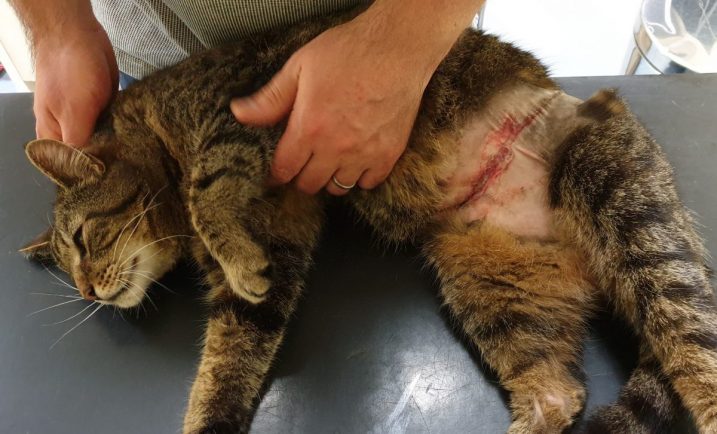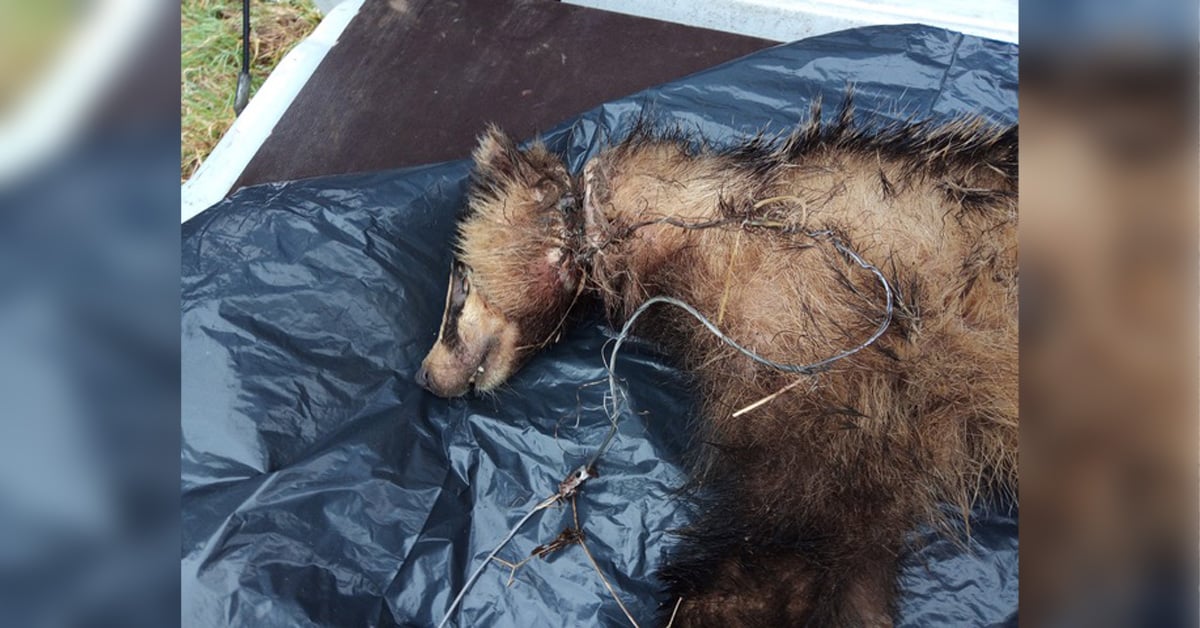Scottish animal welfare charity OneKind has released its 2022 SnareWatch Report, and it’s distressing reading.
Snares are primarily used on foxes on bird-shooting estates in an attempt to stop the mammals from predating on birds such as pheasants and grouse. They are wire nooses that trap and hold the animal until someone comes and shoots her. Of course, it isn’t only foxes who can get caught in snares. Badgers, hedgehogs, rabbits, deer, family pets and more have all been known to be trapped in them. Snares are agonising for the trapped animal, and can cause immense fear, pain and even hypothermia in cold conditions.
The use of free-running snares is legal in the UK, despite being banned in most of Europe. Free-running snares should, in theory, relax if an animal stops struggling, while illegal self-locking snares tighten, and won’t loosen at all. But in reality, free-running snares don’t loosen their grip on the trapped animal.
‘Slow strangulation’ and ‘organ damage’
The report highlights the torture an animal goes through when caught in a snare. OneKind states:
- An animal caught in a snare will naturally panic and become stressed. They may also suffer from hunger, thirst, exposure and attacks from other animals.
- Snares frequently become twisted or frayed as the animal struggles, leading to slow strangulation or terrible injuries.
- Although designed to trap animals by their neck, snares frequently catch animals around the abdomen, causing deep wounds and even organ damage.
- Snares are non-discriminate and catch a variety of species, including cats, dogs, otters and badgers. Up to 70% of all animals caught in snares are non-target species.
- Snares are sometimes set in such a way that the animal ends up suspended and dies by slow strangulation, or near water where s/he can drown.
‘Choking in distress’
The report goes on to give examples of incidents that occurred in 2022, where “non-target” animals were trapped in snares. The examples include a cat who returned home twice with a snare around his neck, and a dog who went missing for 2.5 hours. His guardian found him “deep in hedgerow with a snare tightly round his neck, choking in distress. The dog thankfully recovered from his ordeal.”
The report also lists wild animals who have been killed or injured by snares, including an otter pup, who was found in Lanarkshire and later died from their injuries. And in Dorset, a deer died after getting caught:
“The deer was found with the snare round her neck, panicking, which made the wire tighter. Witnessing the deer thrusting herself into a hedge, the couple stood back as they realised their presence could frighten, and panic, her more. One of them left to get wire cutters, but by the time they returned the deer was dead.”
The report also gave an account of a badger who was found in agonising pain, hanging by his neck in a wire noose:
“Alexis Fleming, who runs the Maggie Fleming Animal Hospice in Kirkcudbright, was called to the scene in Dumfries and Galloway after a member of the public spotted the cub in distress. Alexis discovered the wire wrapped tightly around the animal’s neck and body. She stated, “He was hanging by his neck from a wooden gate, half-covered in mud, frantically clawing and chewing at the fence, and it was obvious he’d been there for at least a day, possibly more”. The charity worker managed to cut the snare from the gate and transport the badger to Hessilhead Wildlife Rescue Centre in Beith, North Ayrshire, where the badger thankfully recovered.”

The end of legal snare use?
OneKind is campaigning for an outright snare ban in Scotland. There are 1906 registered snare operators in the country, but Scotland is currently reviewing the impact of snare use. Indeed, in December 2022, an advisory board to the Scottish government recommended that the sale of snares is banned in the country. Wales, meanwhile, has introduced a bill and will ban the use of snares and glue traps.
When Wales’ Agriculture Bill passes, it will, hopefully, pave the way for Scotland and England to follow suit. In England, the last review on snares was almost 20 years ago, back in 2004. Any move to ban snares will be opposed by the shooting and hunting lobby, such as the Countryside Alliance (CA) and the British Association of Shooting and Conservation.
In January 2023, Government ministers debated the use of snares in England following a successful petition on the government’s website, which over 10,000 people put their names to. A DUP minister made sure that the CA had its say in the debate, reading out a statement from the organisation. Indeed, the CA spouted its usual rhetoric, dressing up the murder of animals as “conservation”. Whether it is arguing for hunting foxes, or whether it is trying to convince ministers that snares are actually essential, the CA uses the same “conservation” argument time and time again. It said:
“Snaring is one of a range of essential measures used to manage certain species, the control of which underpins agriculture production, farm animal husbandry, the sustainable harvesting of gamebirds and the protection of species of the highest conservation concern, including the curlew. Specifically, it is a legitimate and effective form of fox control, especially in habitats where other control techniques are either ineffective or impractical.”
Labour MP Rachel Maskell put the CA in its place when she replied:
“In nature there is a balance. That balance does not give us the right to exploit wildlife for our own personal gain, which is what is happening. The shooting lobby might be having its say in this debate, but we cannot continue to believe that we have a right and a power over nature. Nature will find its balance, and it is important that we nurture and enable that balance.”
Maskell stated that:
“We have 188,000 snares in operation at any one time, with 1.7 million animals killed… We must remember that 75% of the animals snared are not foxes… We know that 33% of the animals snared are hares, which are not predatory animals; 26% are badgers; and 14% are other species. Otters, deer and even horses get caught in snares. Although they have breaks in them, not every animal breaks free. As a result, much suffering is caused. We have heard about the suffering: asphyxiation, laceration, dislocation, amputation, starvation, dehydration and predation.”
It is clear that if Westminster seriously considers a ban on snares in England, the shooting and hunting lobby will do all it can to ensure that it prevents any meaningful legislative change.

Look out for snares
It is down to all of us to look out for snares when we’re in the countryside. The Hunt Investigation Team previously told Protect The Wild:
“Shooting estates – grouse, pheasant and partridge – are prime locations, along with some farmland. Please be alert for wildlife persecution in your area…”
Meanwhile, OneKind gives advice on what you can do if you come across a snare. The charity says:
“We urge anyone out walking in the countryside to take photos and report any snares or snaring incidents through SnareWatch.
If you find a live animal in a snare call the SSPCA in Scotland (03000 999 999), RSPCA in England and Wales (0300 1234 999), or the USPCA in Northern Ireland (028 3025 1000). We do not advise trying to release an animal yourself as the animal could be injured, could injure you, and most probably will require medical attention.
If you find a snare that you suspect is illegal or a dead animal in a snare please report this to the police:(dial 101, asking for the local Wildlife Crime Officer if you have one) and make sure you get an incident number from the call centre operative.”
- Read Protect the Wild’s information page about snares and the shooting industry.
- Please follow and support organisations working to end snare use including the National Anti-Snaring Campaign, Hunt Investigation Team and SnareWatch.
Featured images via North East Essex Badger Group and Maggie Fleming Animal Hospice

